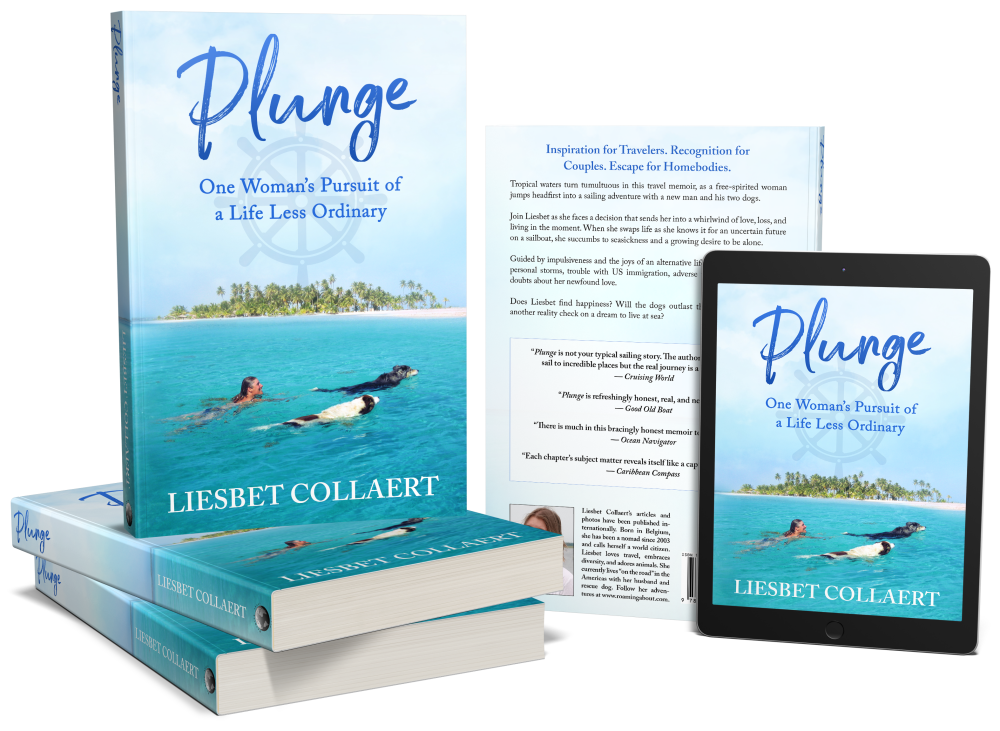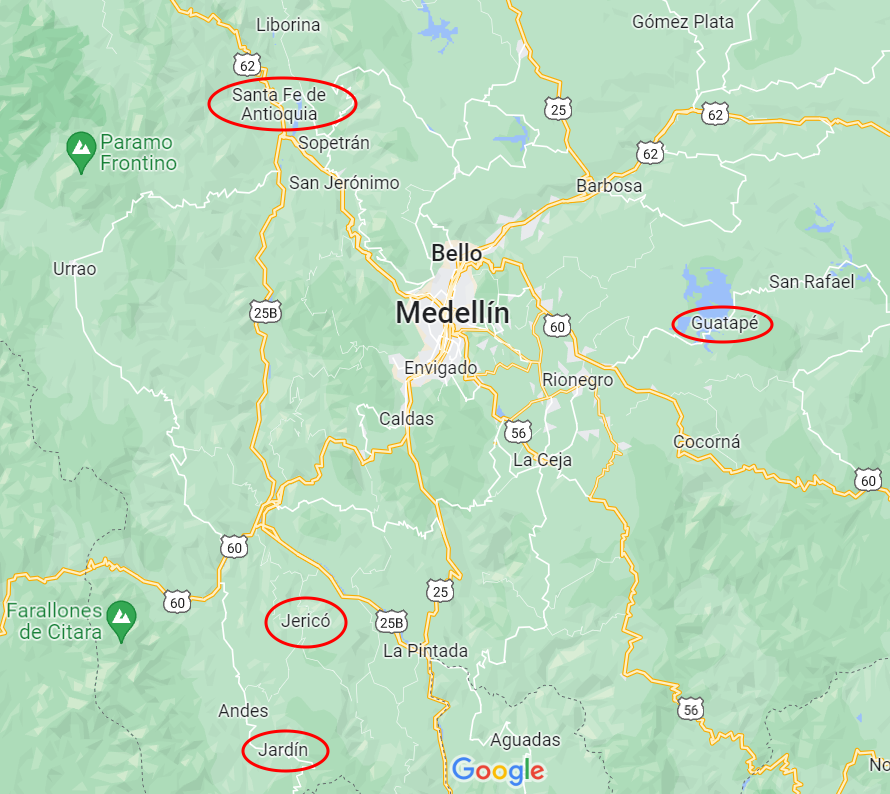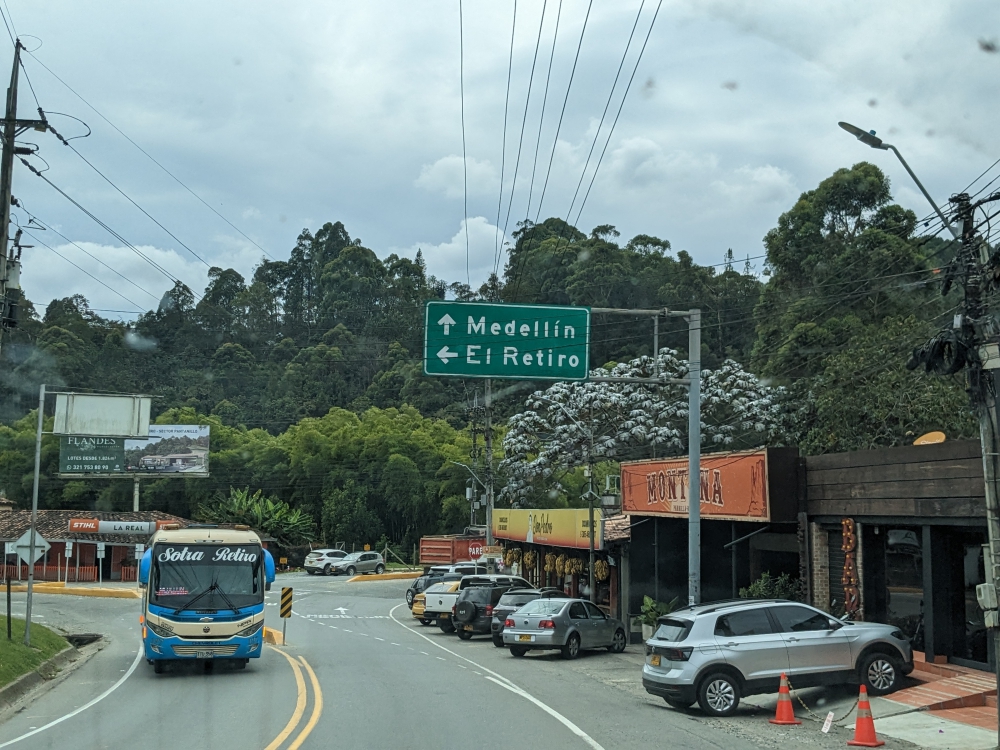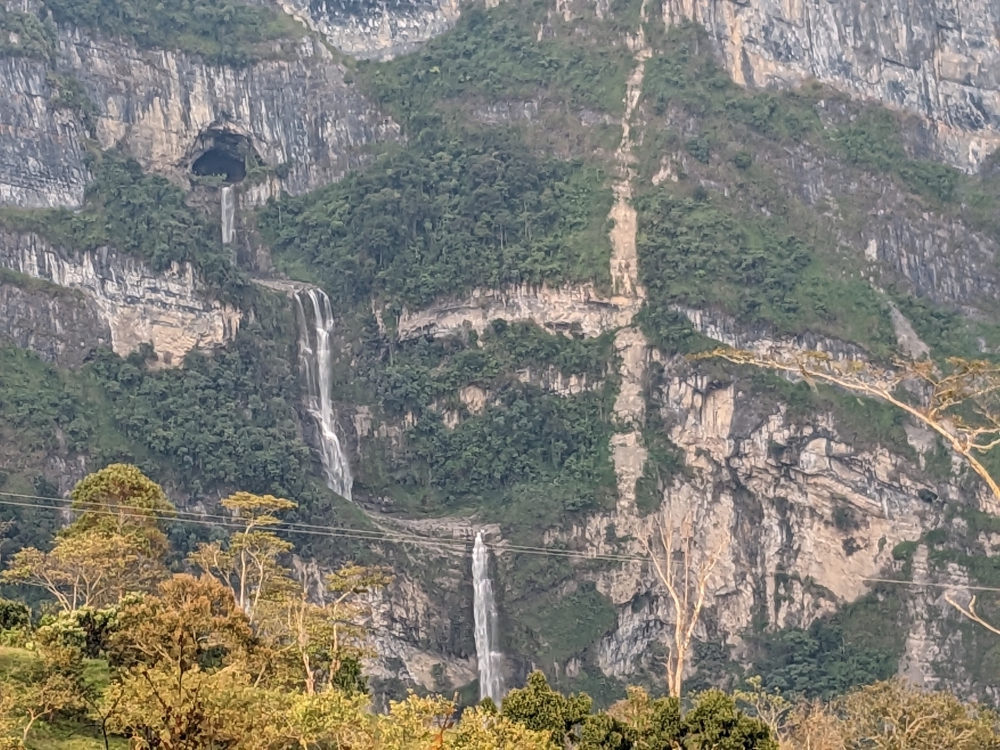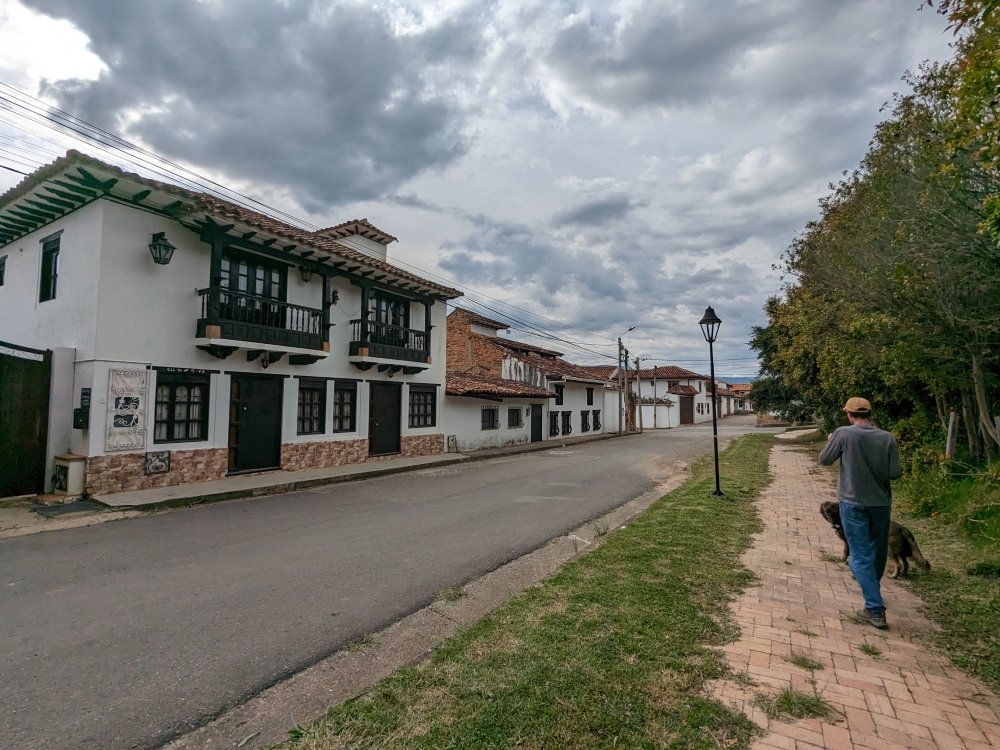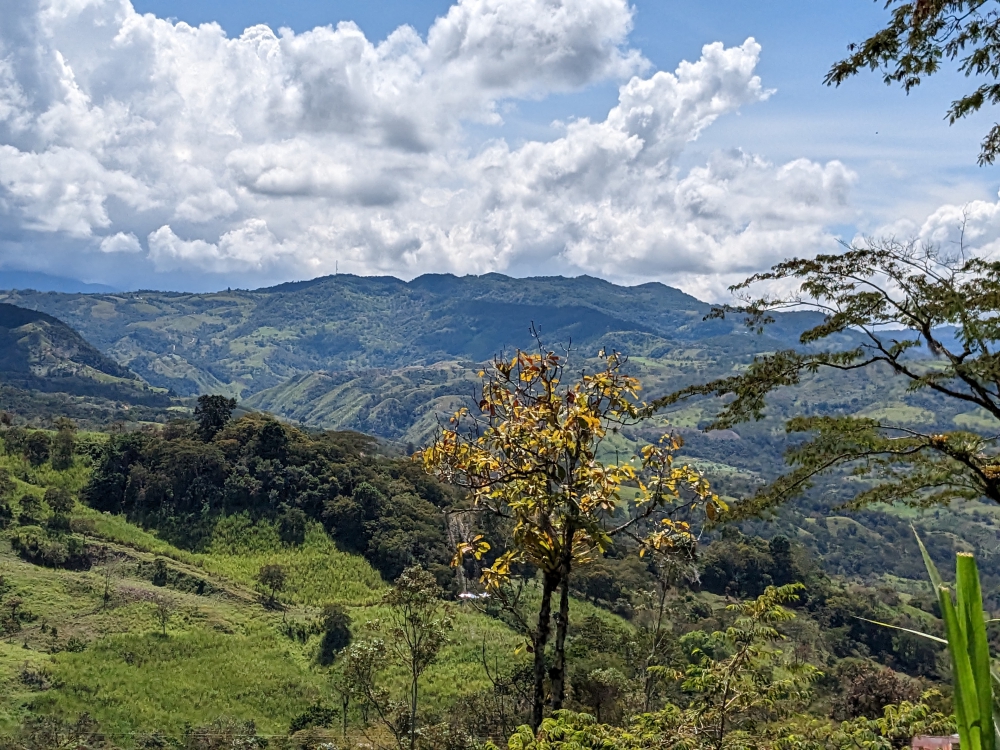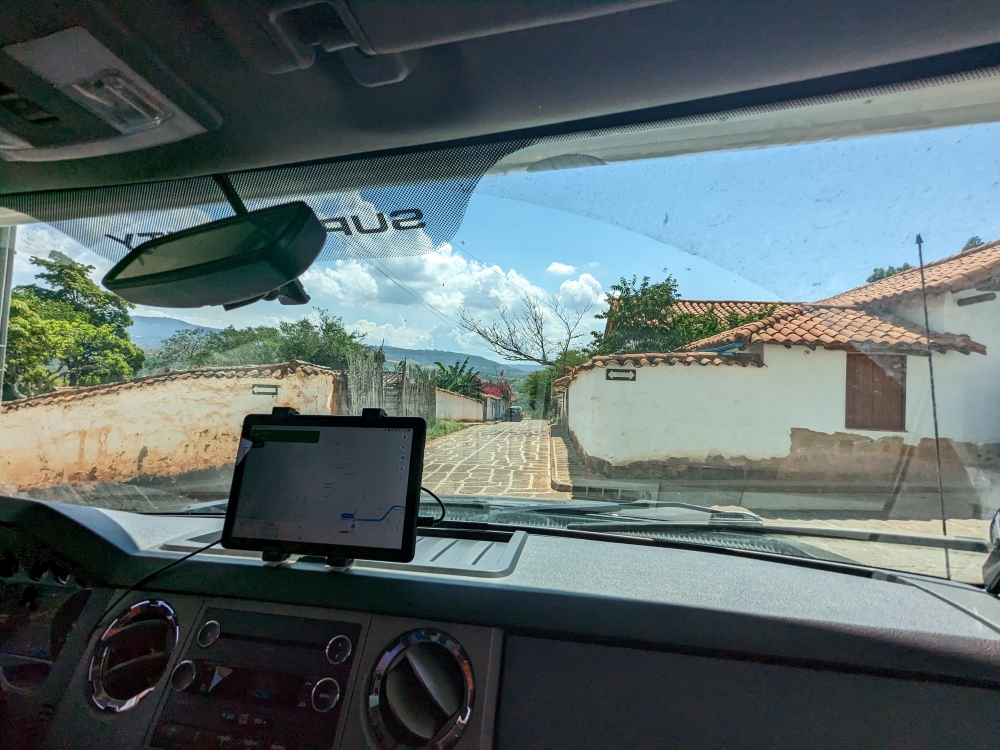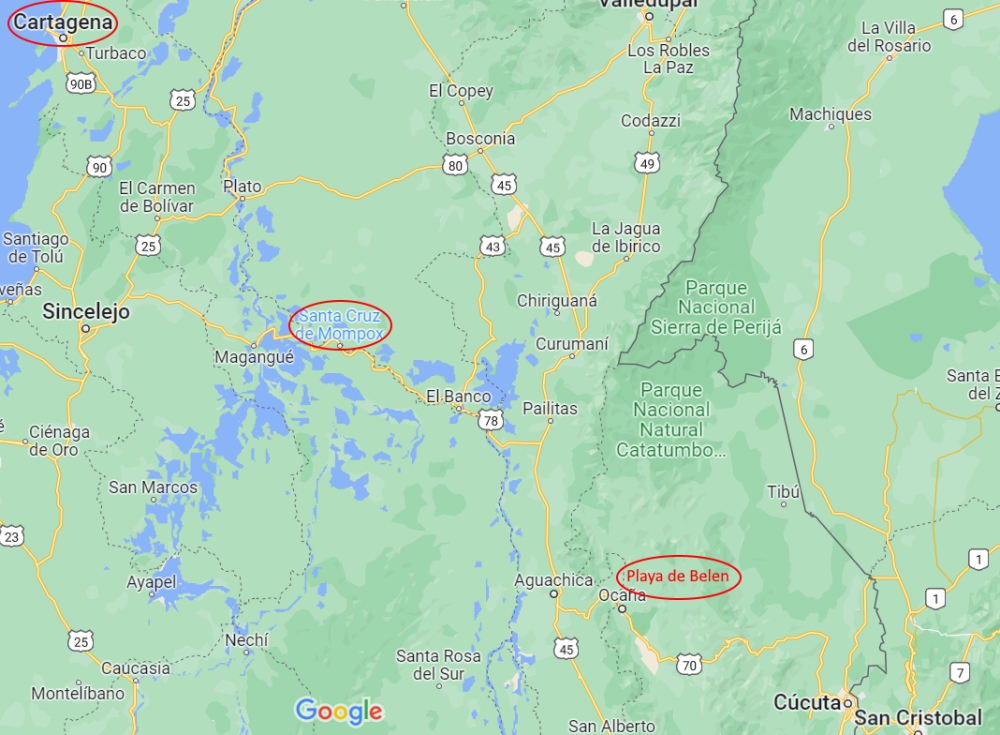In the middle of March, our trio decided to head south and then east from Jerico, high into the mountains, to visit natural hot springs… The road was long, windy, and not without obstacles, but our biggest disappointment was arriving at our camping spot in the rain, with no visibility.
(Hover over or click on photos in galleries to read their captions.)
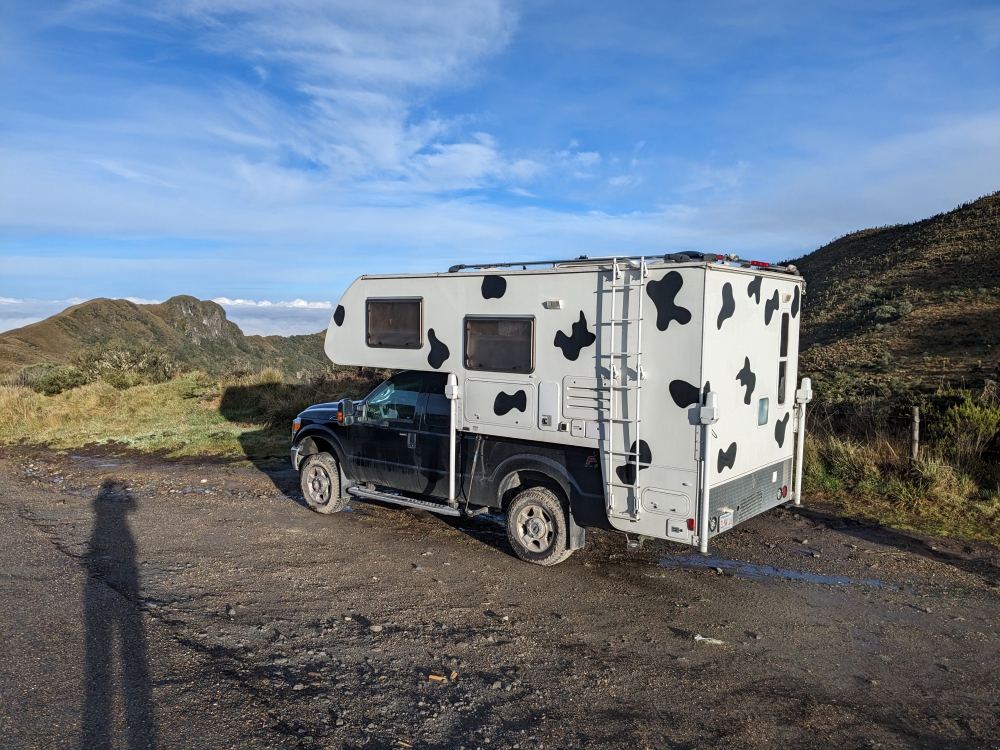
But we woke up with this: blue skies and a view of our surroundings.
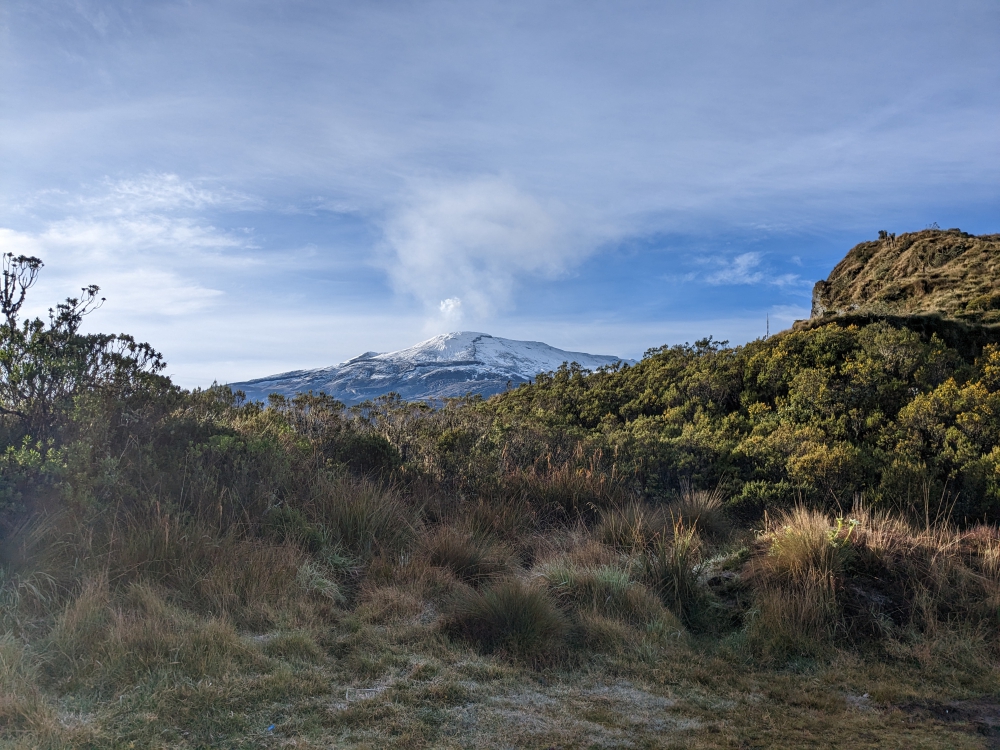
Imagine our surprise when we spotted this snow-covered volcano on our early morning walk with Maya.
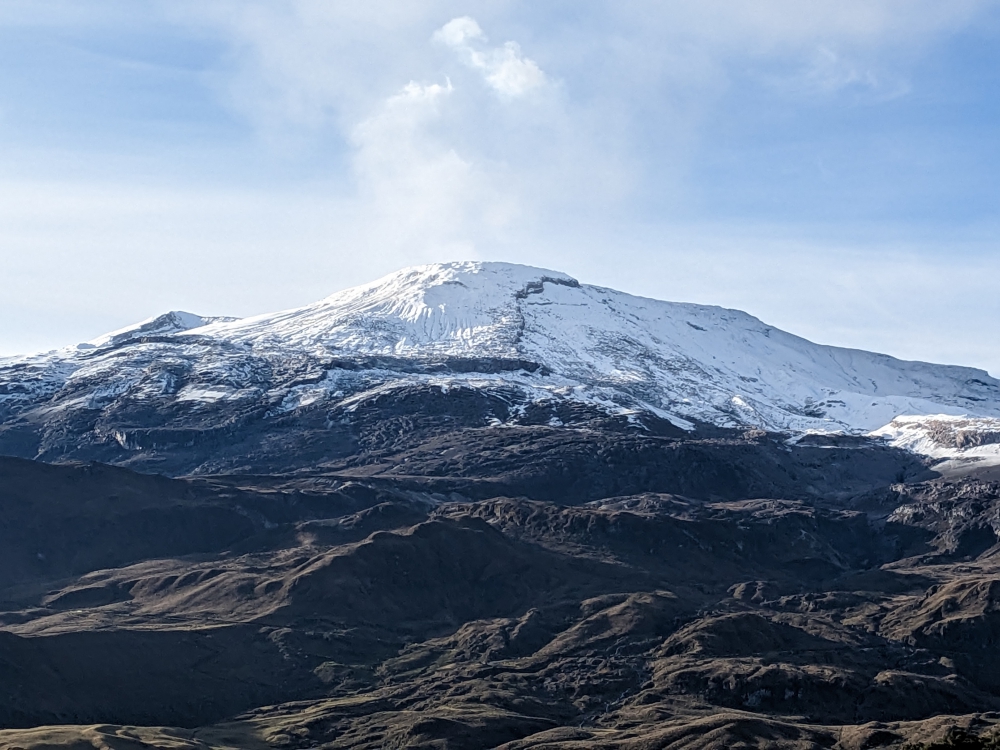
We had to do a double-take!
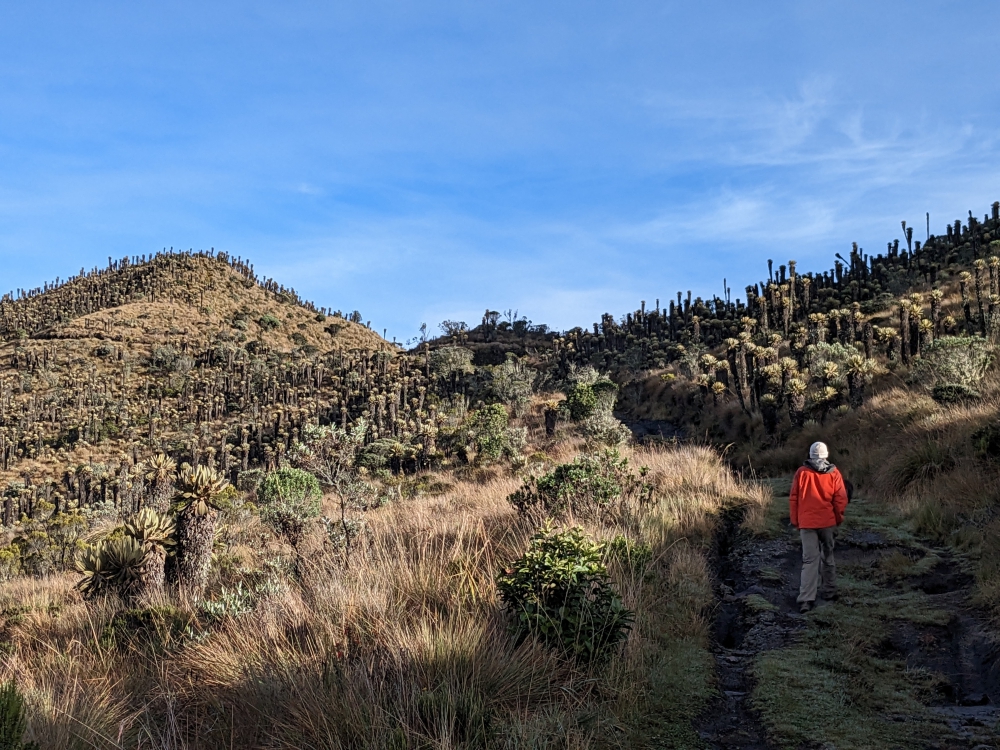
At 7am and at an elevation of over 13,000 ft (4,000m), it was cold!
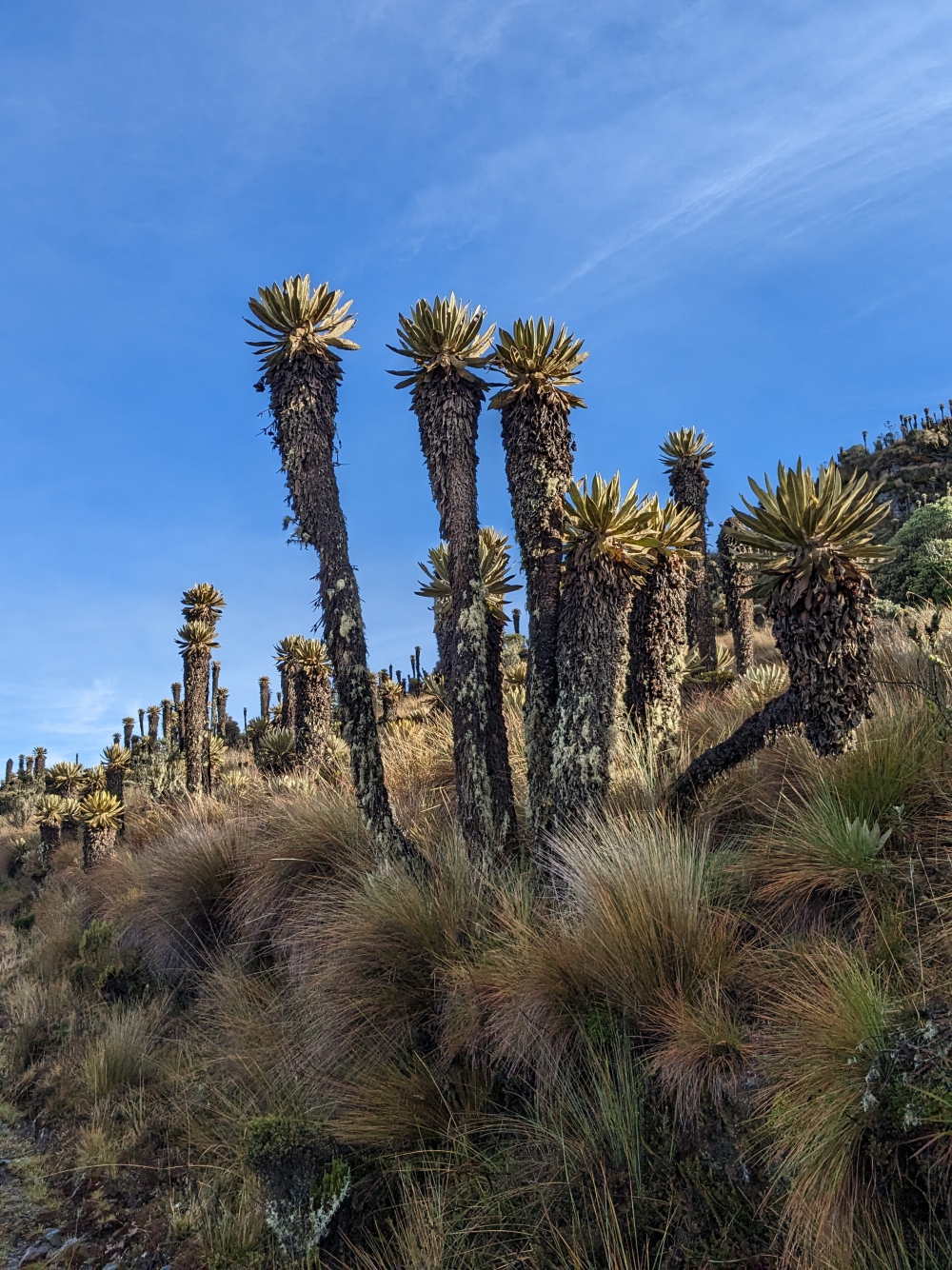
The flora was interesting as well.
I was enamored by all the flowers that bloomed at this altitude.
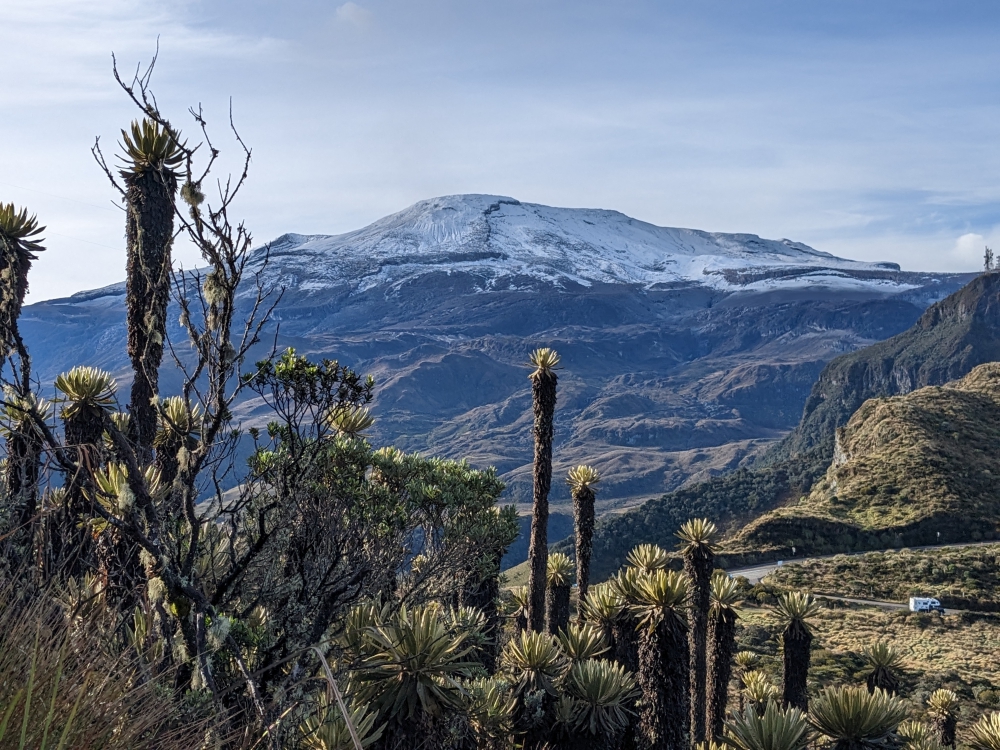
We couldn’t get enough of this view – Can you see Thirsty Bella?
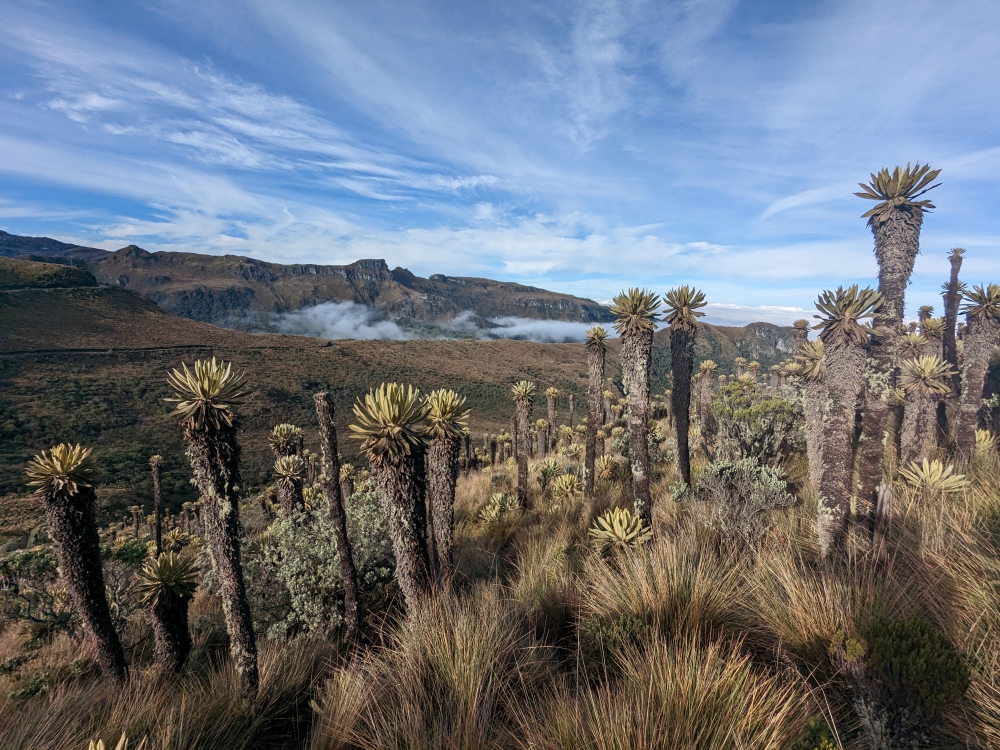
The other side of the valley. Clouds started to roll in again.
After our morning walk and breakfast, we drove to El Sifon hot springs. It wasn’t even 9am yet and the volcano was already covered by clouds, with fog starting to roll in. But the first few miles were still photogenic, with lots of waterfalls along the road.
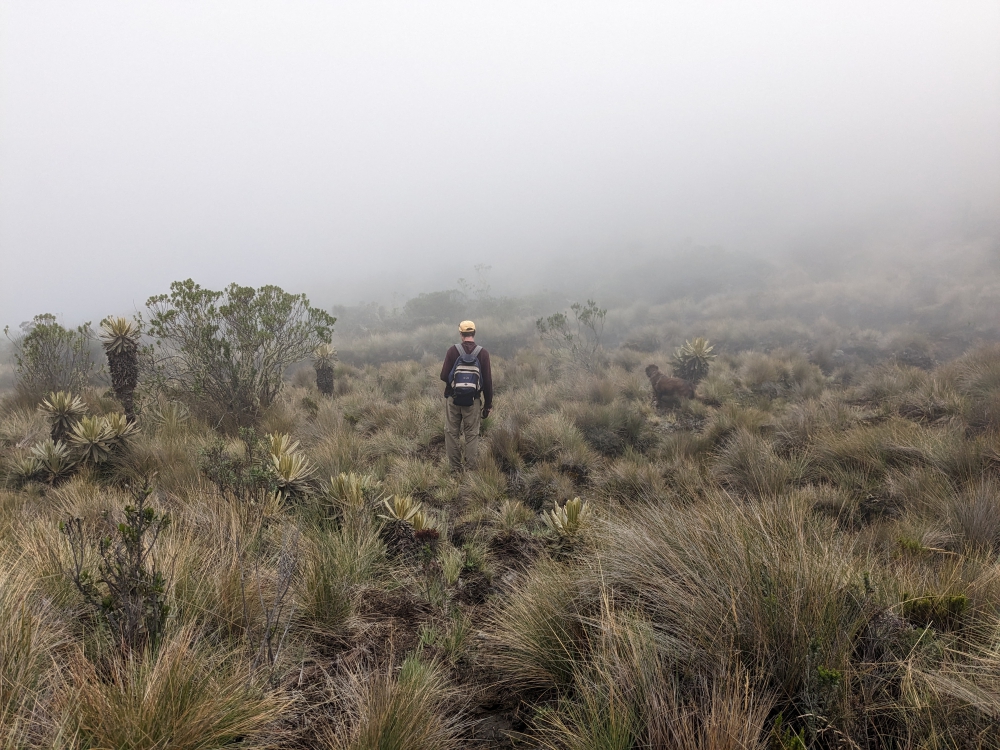
Where is the trail?
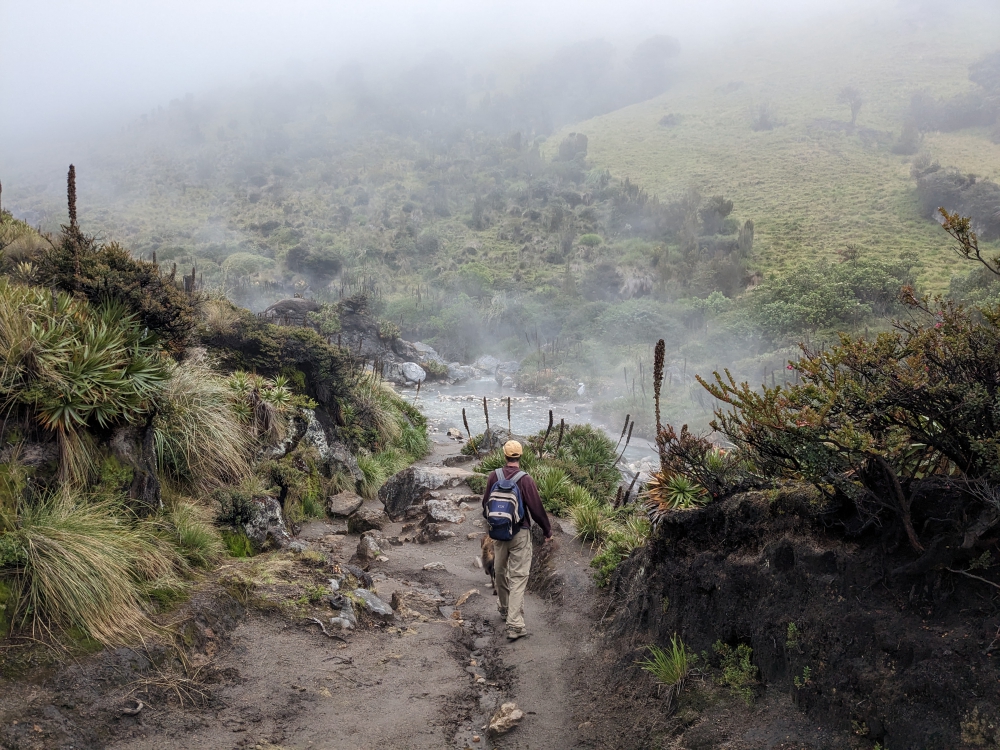
We managed to find a dirt road at some point and descended about 1,000ft towards the river and the natural hot springs.
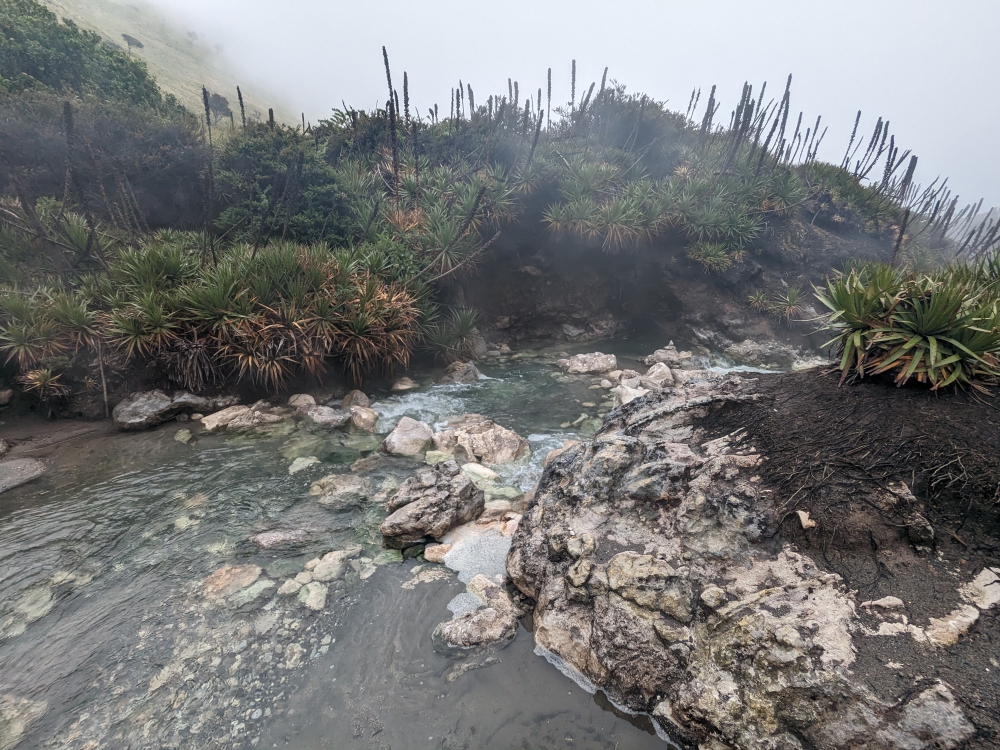
We had the area to ourselves!
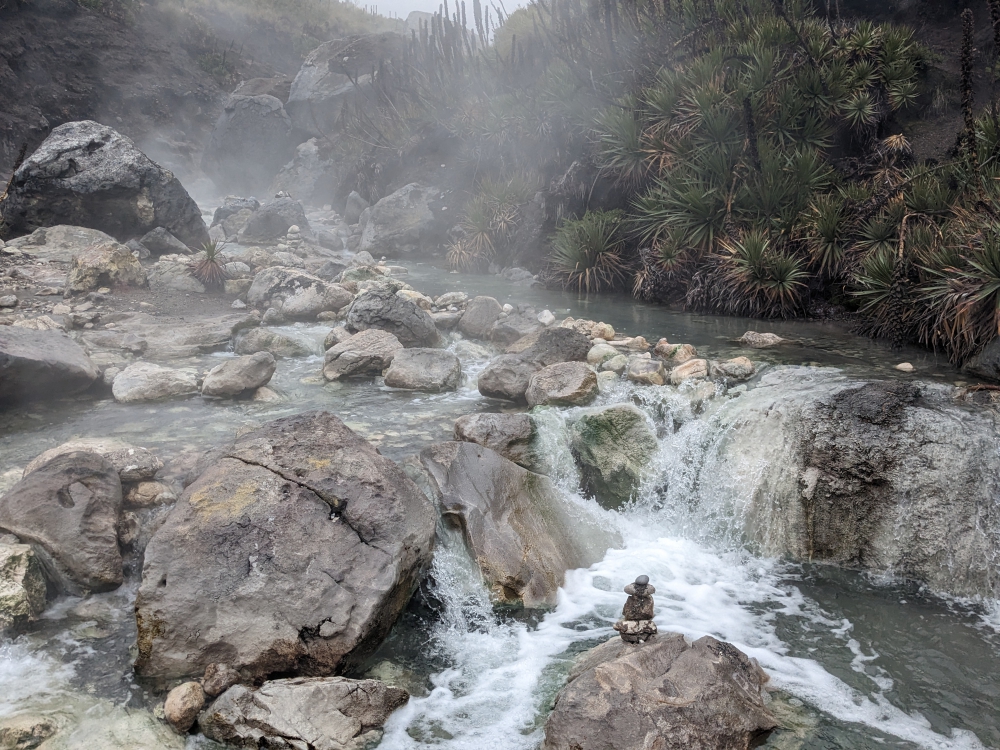
We found our spot: under the two waterfalls was a small pool.

This was a very scenic area, despite the steam.
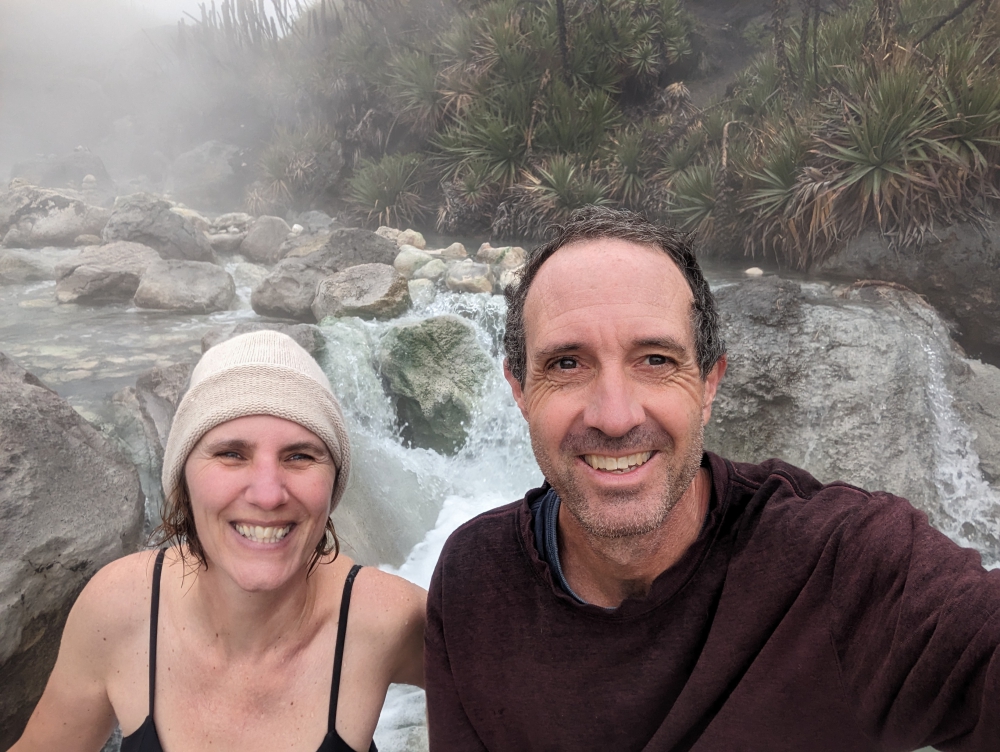
After our soak – the contrast between the water and air temperature was huge!
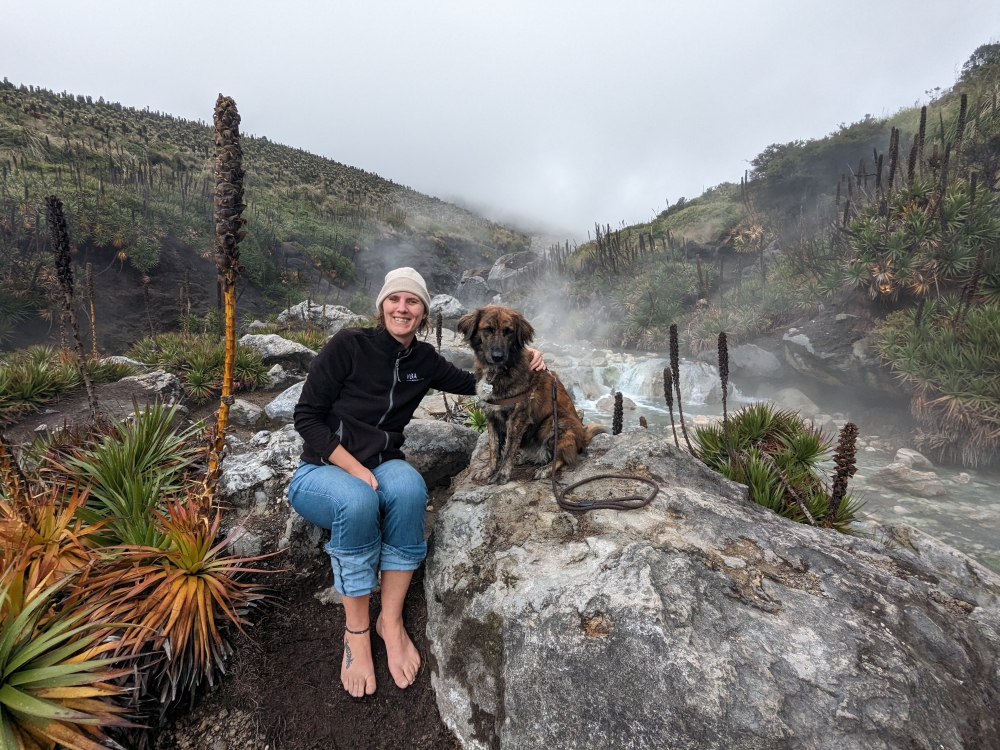
One last shot of El Sifon hot springs!
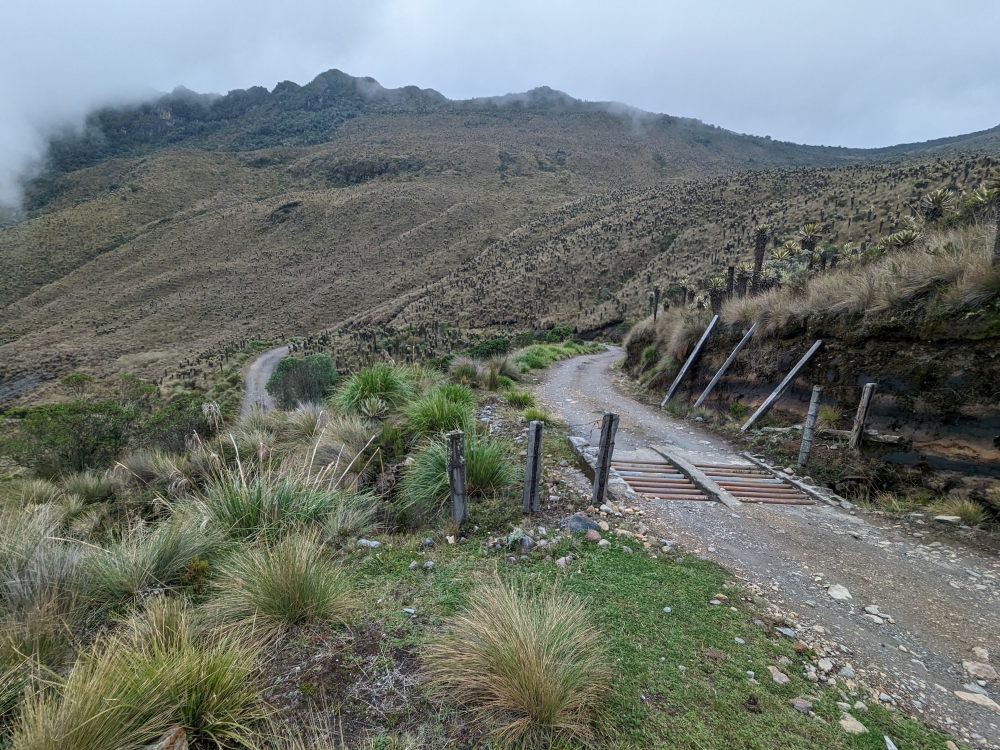
Then, the walk back up was inevitable. It took forever, since the air was thin and we needed to stop often to catch our breath, especially me.
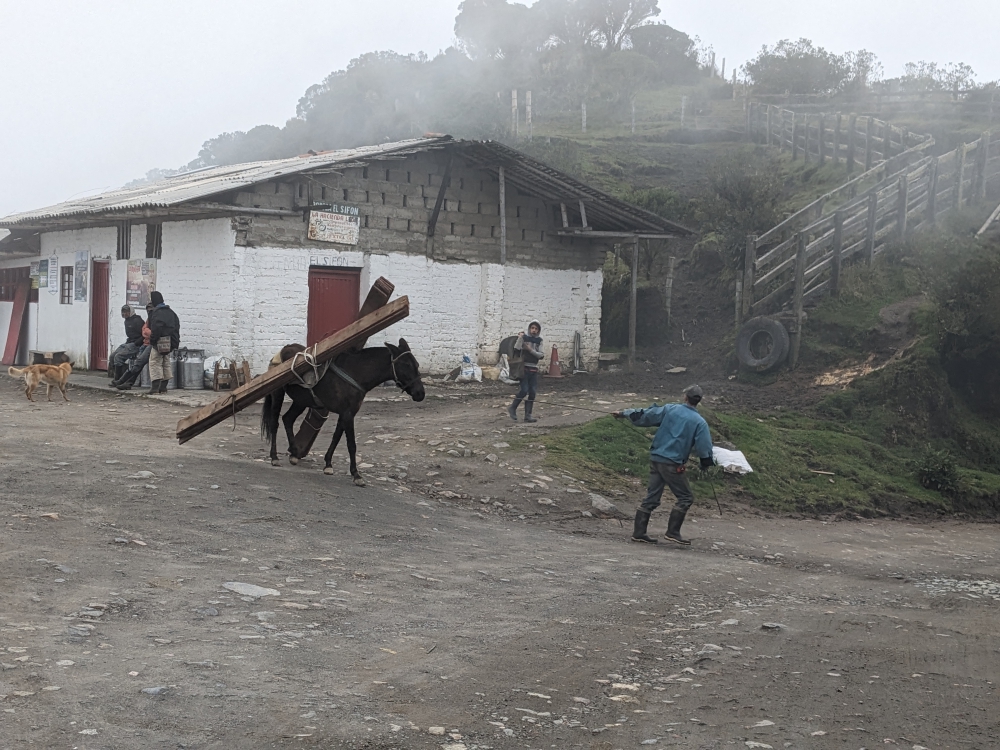
Back at the parking lot, life went on as always.
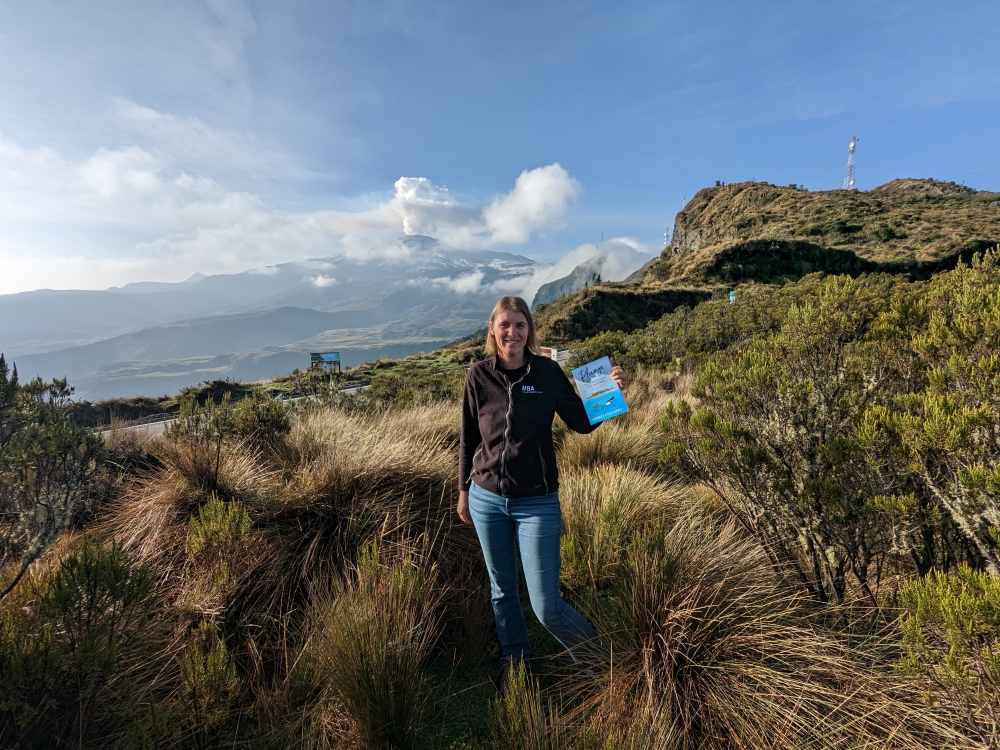
On our second morning, I encouraged Mark to take a photo of me and my book, Plunge, in front of the volcano…
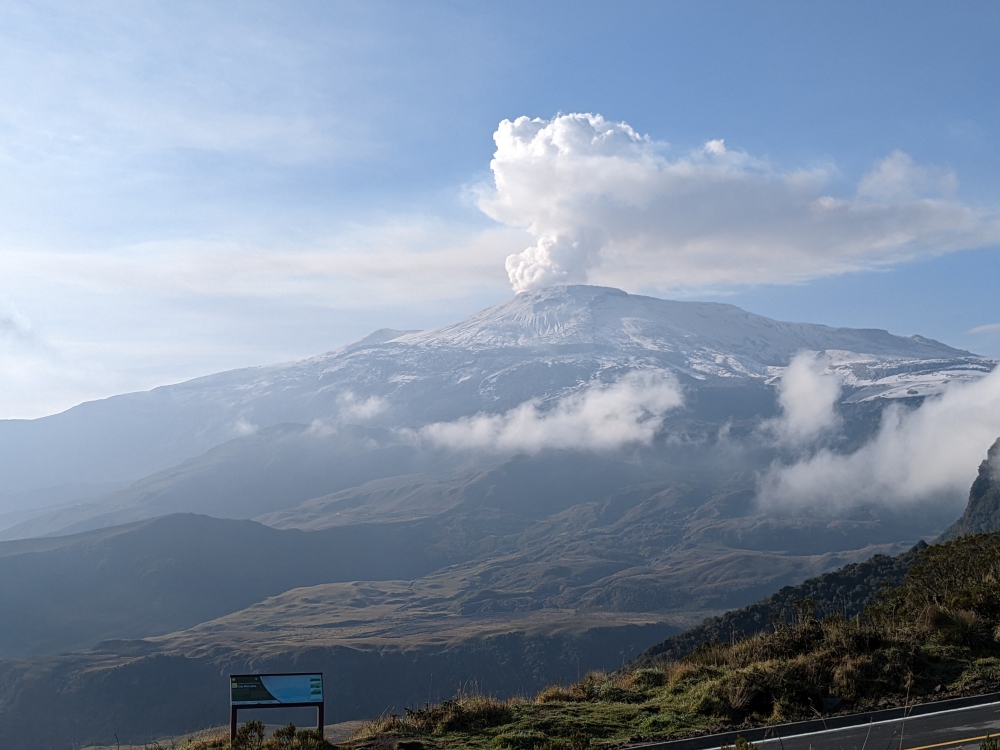
That’s when we noticed a slight change in the appearance of Nevado del Ruiz…
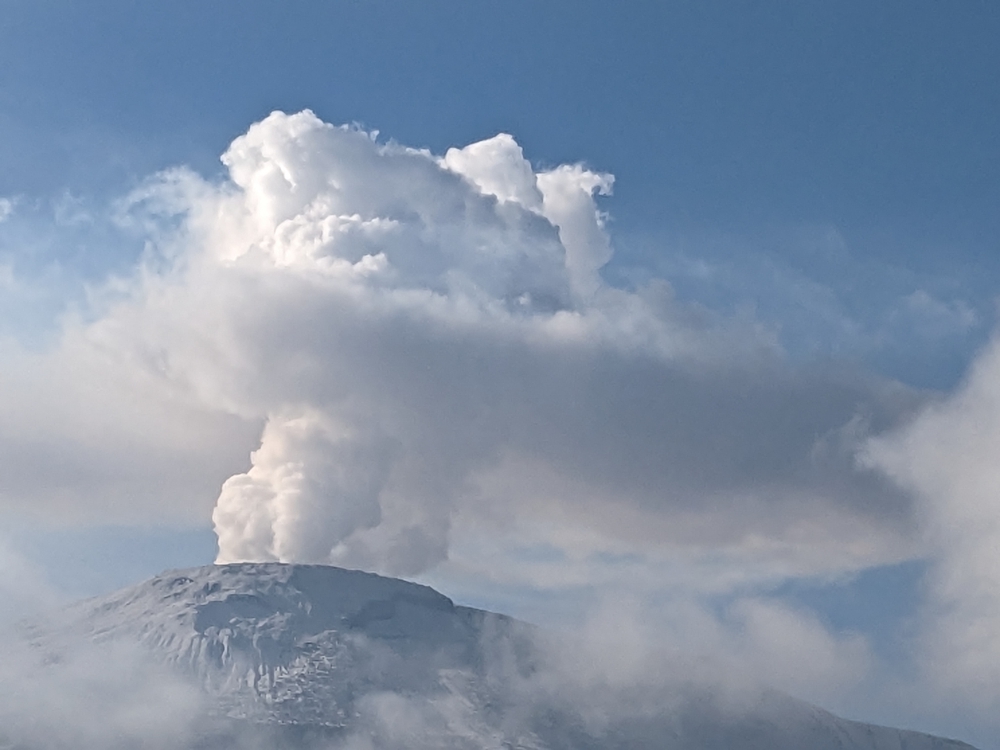
Most of the snow had melted and it was spewing steam!
The photos underneath were taken around the same time, early in the morning, two days in a row. Do you notice the difference in the volcano’s appearance?
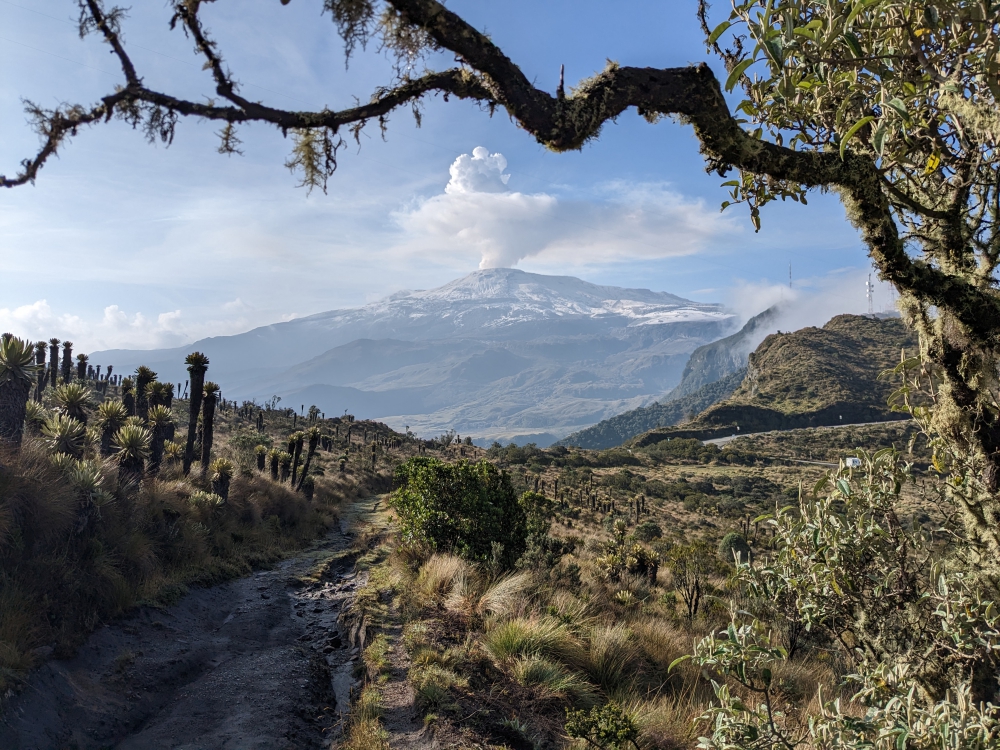
Mark took this fabulous shot.
Mark, Maya, and I came here in our truck camper Thirsty Bella to check out the hot springs and we received these spectacular views as a bonus! It was one of the quietest places we camped in Colombia. We did have to leave after two nights, though, because it was difficult to sleep and breathe at 13,000ft (4,000m) altitude and the condensation inside the camper was so bad that water kept dripping down from the ceiling!
(A week later, people from the surrounding villages had to be evacuated because of the heightened risk of a volcanic eruption and access to this area became restricted. Until now, nothing dangerous has happened. Read a CNN article here.)
360-degree view on our morning walks with Maya
Curious about a previous ten-year chapter in our nomadic lives, which includes eight years aboard a 35-foot sailboat in the tropics with dogs, check out my compelling, inspiring, and refreshingly honest travel memoir:






















